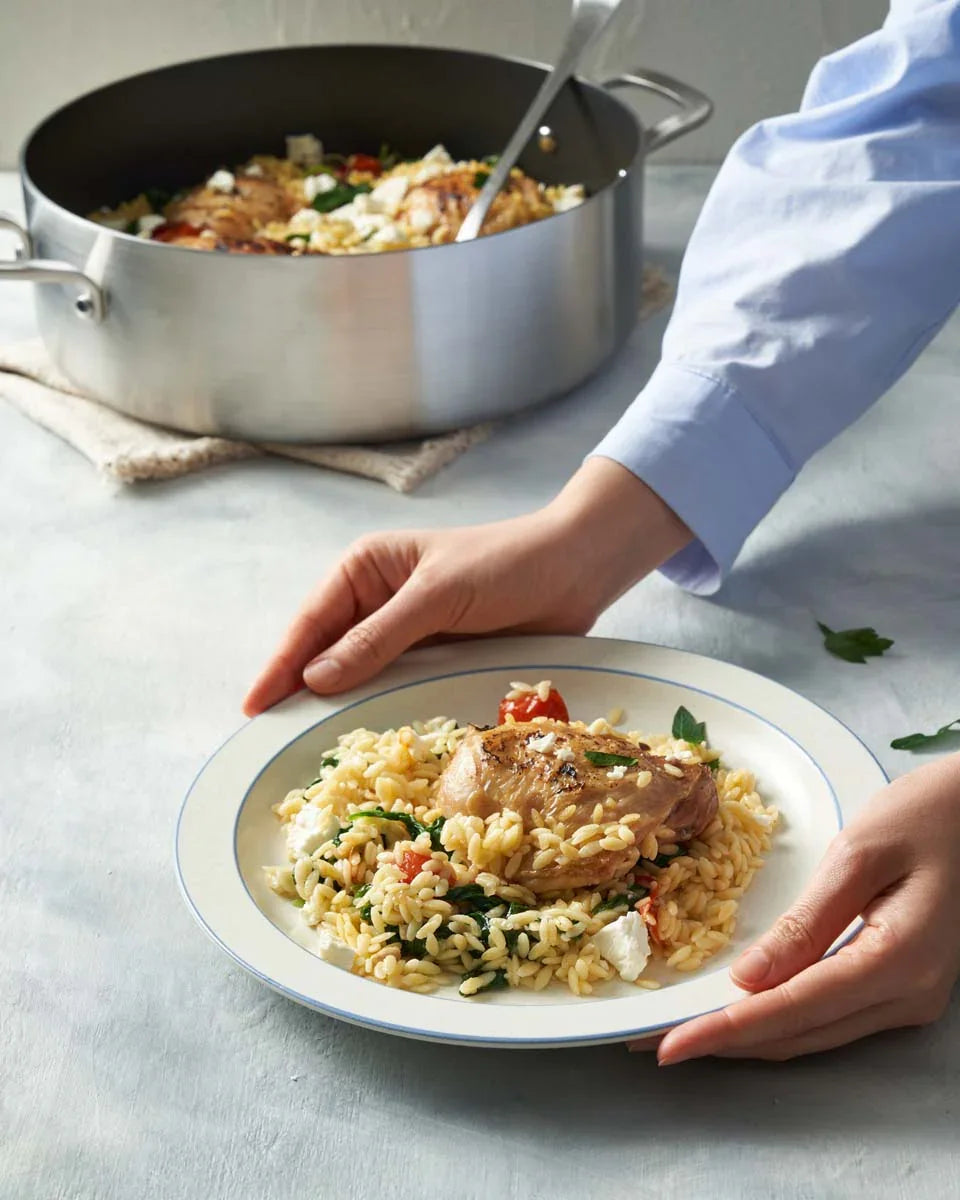

How we are trained to shop for cookware
The psychology of shopping
Think about how we’re trained to shop for cookware. Those big kitchen stores with row after row, brand after brand of discounted cooking gear… where to even start? It’s the same zoo online. Unless someone knowledgeable guides you, or you do extensive side-by-side product research, purchasing can come down to who’s offering the biggest discounts.
It’s easy to be seduced by a bargain, but it’s not the best way to buy your important kitchen kit.
Here’s how to approach shopping for cookware.
1. Look beyond discount strategy
Discounts are psychologically designed to trigger purchasing. When you see a heavy discount, it makes a product seem like a really good deal, even if it’s not.
When you understand that retailers know all the tactics in the book to influence your buying behaviour (creating perceived urgency, using colours like yellow and red to prompt action, using bold fonts), you’ll be able to look way beyond those price tags.
@makokitchenware I’m grateful all the time 🙏🏻✨😇 (to avoid those stores) #cookware #mako ♬ original sound - Taylor Quitara
2. Look beyond the brand
The best-known brands don’t necessarily represent the best quality or value; they just have big marketing budgets.
Compare well-known brands with lesser known, but high quality, alternatives as a more thoughtful approach to shopping. This will slow down your decision-making and open you up to different – and maybe better – possibilities.
3. Arm yourself with research
That overwhelming number of options and brands available? It leads to fatigue. It all gets too much; you can't decide. This causes you to default to buying familiar brands, or the cheapest option. No matter how good they are or aren’t.
Narrowing down your needs before shopping, and researching options that best suit them, will help you navigate the blur of choice when you’re in the wild.
4. Get nerdy about materials
Forewarned is forearmed, so research until you are reasonably fluent in materials and construction.
There is more to assessing the quality and performance of cookware than just the price and looks. If you’re educated in the more technical aspects of cookware you won’t fall prey to a sales spiel or compelling marketing copy.
5. Beware of the hidden cost of cheap cookware
While buying cheap cookware is a quick fix, it can lead to higher long-term costs due to frequent replacements, or damage because the overall quality is not great. Investing in higher-quality cookware, like 5-ply stainless steel, has a larger up-front cost but the value proposition is greater. This is because your cost-per-use over time will be surprisingly low, making quality cookware an incredibly cost-effective decision.
If you purchase durable, high quality pans, you only need to buy them once. Which makes for much better value for money.
MORE READING

Honey Soy Meatballs

One Pot Chicken Orzo

